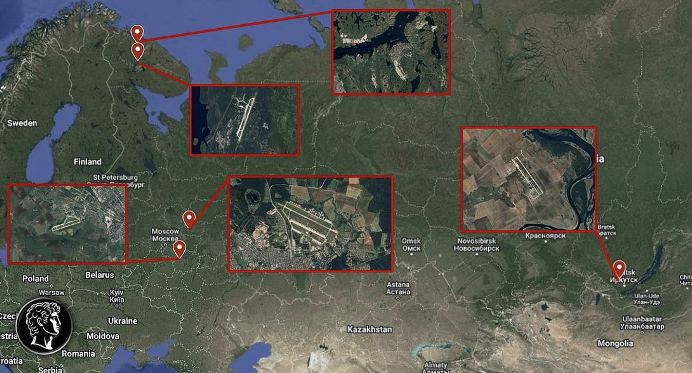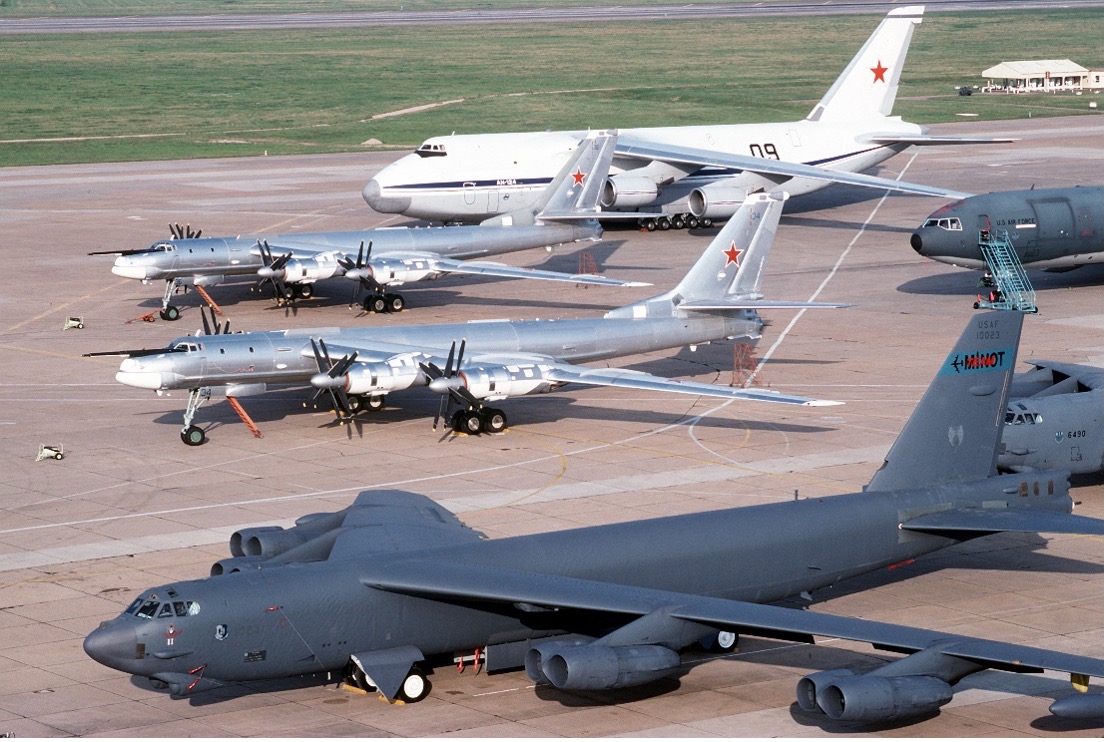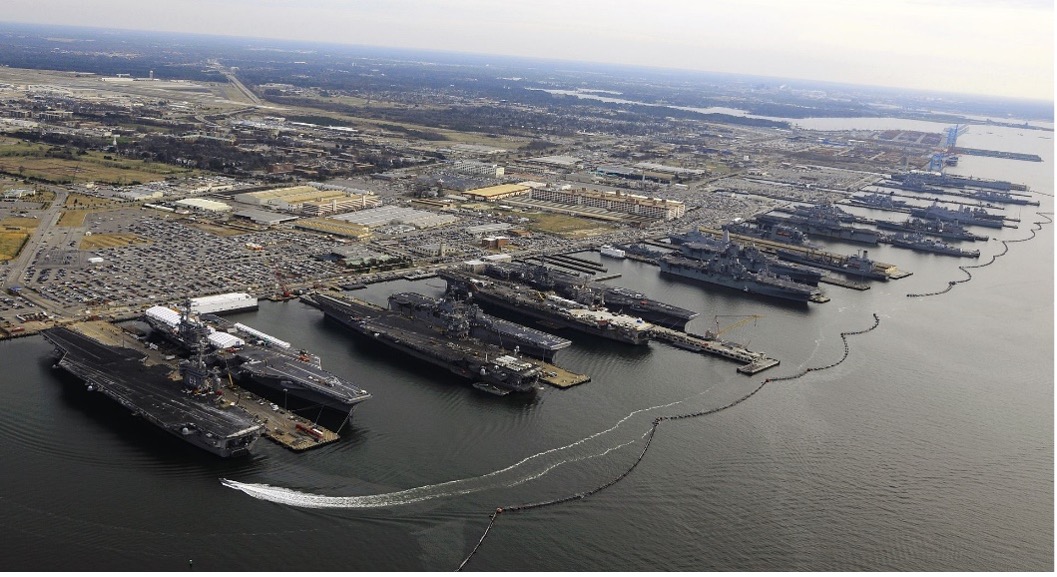Last weekend, the Russia-Ukraine conflict made larger-than-usual headlines. In an audacious move, Ukrainian drones struck numerous Russian targets in rear areas, far from any front lines. It was a “Russian Pearl Harbor,” per Ukrainian and some Western news accounts. I’ll get into the details below but first…
Beware rising to this kind of military click-bait! That is, all wars have their own dynamic. And in the context of what we’ve seen over the past four years, it’s more than arguable that what occurred the other day was a Ukrainian propaganda ploy based on a well-planned stunt.
Yes, apparently some number of Ukraine’s attack drones hit some number of assigned targets. Boom-boom-boom, right? But keep in mind that the drone strikes were designed not just to destroy Russian equipment, but also to paint President Trump and the U.S. into a geostrategic corner.
Indeed, according to the White House, “Ukraine did not inform @potus ahead of its major drone attack on Russia.”
Right now, there’s much that we don’t know and likely will never know in all of this. Perhaps Ukraine acted alone. Or maybe Ukraine worked in concert with other geopolitical players; and don’t be shy about being cynical here, because immense money and power are in play as global geopolitics realigns in our era.
But clearly, Ukraine’s goal was to hit Russia with a big, flashy drone attack and likely elevate the war on Europe’s eastern flank to a higher level, namely to a global scale.
Right away, my takeaway is to be afraid. In fact, be very afraid. Because absolutely, this kind of imbecilic war gaming will take us all down a rocky road, to a very bad place where we do not want to be.
First, Some Basic Facts
On Sunday, news broke of Ukrainian drone strikes against five Russian airbases located across the width of that vast country. Also, Ukrainian elements sabotaged Russia’s rail system. And then reports trickled out of a Ukrainian attack on a submarine base in Russia’s far north.

Ukraine targeted important Russian assets across the Eurasian Landmass. Courtesy CdrSalamander.
Initially, Ukraine claimed 40 or more Russian aircraft were destroyed on the ground, including two types of Tupolev bombers, specifically one or more Tu-95MS, as well as Tu-22M3. Various media accounts characterized this as the largest single loss of Russian aircraft since World War II.

Two Russian Tu-95 bombers (above) next to US B-52 (below) during a better time in U.S.-Russia relations. USAF photo.
Through official channels, Russia has admitted losing aircraft but denied the Ukrainian numbers. Some Russian sources put that country’s loss at five aircraft destroyed (definitely not 40+), and several damaged but repairable. Frankly, right now nobody knows for sure, aside from insiders at Russia’s Ministry of Defense and high government officials in the Kremlin; and even then, supplemental reports and assessments are still likely filtering in.
Plus, Ukraine claimed a successful drone strike on a submarine base at Severomorsk, in the far northern reaches of Murmansk where the headquarters of Russia’s Northern Fleet is located. But Russia has adamantly denied any damage to its base or submarines in any respect.
And this past weekend, Ukraine also carried out two major acts of sabotage to the Russian rail system. Both involved destruction of bridges which led to derailments, and deaths and injuries to train crew and civilians.
As it all unfolds, it’s one thing to accept the idea that Ukraine is fighting back against Russia. After all, there’s a war raging over there, even if Russian authorities call it a “special military operation,” a term with particular legal meaning.
Over and above all of that, however, something else jumps out; that Ukraine deliberately targeted distinct elements of Russia’s strategic nuclear weapons complex, namely those Tupolev bombers, and also with the reported attempt to hit a submarine base. This alone elevates the import of what just occurred, and hence it’s no stretch to say that Ukraine has targeted President Trump – and the entire United States of America – at a geostrategic level.
Another way to say it is that nuclear weapons platforms like bombers and submarines have a strategic military significance all their own. Whether it’s the President of Russia or the President of the United States, what is the top leadership element supposed to think when word comes that somebody is attacking the foundations of your country’s nuclear systems?
I’ll refrain from going deep into the weeds of warfighting and keep the answer simple: the immediate message of an attack on nuclear platforms – anywhere, any time: bombers, missile silos, submarines – is that another nation is trying to take out your strategic component. And this kind of hostile action could easily lead to rapid military escalation, up to and including “pushing the button,” so to speak.
Okay, yes… I get it that Ukraine doesn’t like getting blasted by Russian weapons, certainly not by weapons fired from Russian bombers.
But as a matter of American national interest, it is beyond outrageous that Ukraine attacked those strategic-level bombers (and possibly submarines) at home bases, with all the potential to trigger an escalation to nuclear war. And they didn’t tell Trump, eh? Hmm…
If you haven’t figured it out yet, America and the world dodged a huge bullet last weekend. Ukraine attacked Russian strategic platforms, and Russia refrained from escalating the matter to nuclear war.
The Big Picture Remains: Ukraine Has Lost This War
Let’s take a moment to dig into this so-called “Pearl Harbor” narrative. If you Google it, you’ll find this particular label all over the place. So, what’s behind the curtain here? Because the whole thing is being framed in a manner straight out of the manuals of psychological warfare.
In terms of basic military history, in 1941 Japan’s Pearl Harbor attack was intended smash the American fleet at anchor and thus open the way for Japan’s armed forces to sweep southward across Asia. In other words, Japan’s attack on Hawaii was precursor to a much broader move at operational and strategic levels.
Plus, some Japanese policymakers even thought that by wrecking U.S. naval power at Pearl Harbor and following up with vast advances south and throughout the Pacific, the U.S would seek a peace deal. But of course, that’s not what happened.
Today with Ukraine, give credit where it’s due: they scored tactical drone strikes, carefully and ingeniously arranged against distant airfields, and maybe a submarine base. With some success, they caught the Russians unaware. Les fortunes de la guerre, n’est-ce pas?
Still, though, and whether it’s five airplanes destroyed or 40, this entire matter is a pinprick against overall Russian military power. The Russians have plenty more strategic aircraft; they have spare Tu-95s and Tu-22s in storage in aircraft boneyards across the country. And one way or another Russia’s aerospace forces retain sufficient combat power to continue to smash the tar out of Ukraine via long-range missile strikes.
So at this point, let’s consider: Did Ukraine have any operational or strategic goal for these drone strikes? Aside from just the immediate flash and bling? Aside from some Monday morning headlines?
Frankly, I’d like to meet the Ukrainian planner who actually believes that hitting Russia with a bunch of drones will somehow induce or compel that nation to throttle back its war effort, let alone to sue for peace. Someone must be out of their ever-loving mind to think that this will lead Russia to offer a better deal.
And note that these drone strikes happened over the weekend, just before representatives from Russia and Ukraine were scheduled to meet in Istanbul, Turkey to talk about terminating the war in some fashion. Umm, yeah… Good luck with that, now. Or perhaps that was part of the overall scheme as well.
Face it, Ukraine long ago lost this war at both operational and strategic levels. Russia is larger, with far more people, more resources, more energy and industry, and a massive weapon-building complex that can prolong the fighting until the day that Ukraine capitulates. The only “terms” that Ukraine will ever see from Russia will be on a paper entitled “terms of surrender.”
And along these lines, Russians have a saying: “Since ancient times, human beings everywhere have evolved to fight each other; but Russians have evolved to win.”
Implications for the U.S.
Doubtless, the Ukrainian drone strikes will alter the pace and scale of the ongoing conflict. It’s no surprise if Russia cranks it all up to a much more aggressive pace. And of course, we’ll see medium- and long-term effects at strategic and geostrategic levels, likely reflected in how the U.S. will spend gigantic amounts of money on defense concepts and weapon procurement in this new age of drones, atop everything else that’s out there with the ability to kill you.
With respect to this last point, be sure to check out the June issue of Strategic Intelligence. There, Jim Rickards discusses the developing “tri-polar” world of the U.S-Russia-China. While Dan Amoss discusses China’s long-term effort to secure raw materials and dominate manufacturing at a global scale. And Zach Scheidt writes about where to put your investment dollars just now; “Hold your nose and buy,” he says.
Meanwhile in the latest SI issue, I have an article on the evolution of air power that more or less dovetails with what just happened in Russia. The idea is that we’re well into a new age of super-fast missiles as well as drones, and there’s no such thing as “operational depth” in warfighting.
Anymore, in rear areas nothing is safe, and that has deep implications for U.S. systems as well. For example, here’s a nice shot of much of the U.S. Navy’s combat power, all tied up nice and close together in Norfolk.

Navy ships in Norfolk, all lined up nice and close. US Navy photo.
Yes indeed. Let that sink in, so to speak.
That’s all for now. Thank you for subscribing and reading.

















